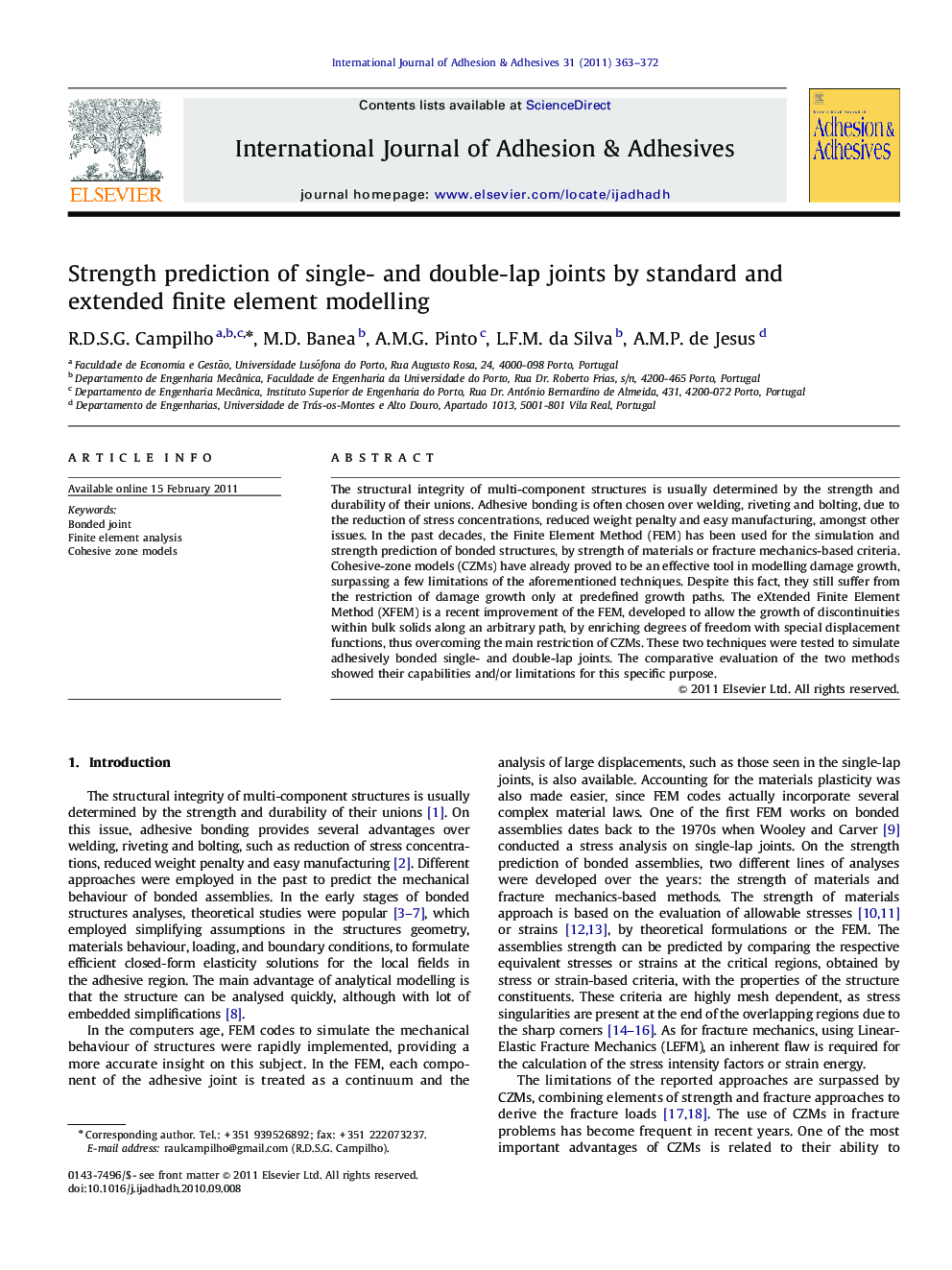| Article ID | Journal | Published Year | Pages | File Type |
|---|---|---|---|---|
| 776168 | International Journal of Adhesion and Adhesives | 2011 | 10 Pages |
The structural integrity of multi-component structures is usually determined by the strength and durability of their unions. Adhesive bonding is often chosen over welding, riveting and bolting, due to the reduction of stress concentrations, reduced weight penalty and easy manufacturing, amongst other issues. In the past decades, the Finite Element Method (FEM) has been used for the simulation and strength prediction of bonded structures, by strength of materials or fracture mechanics-based criteria. Cohesive-zone models (CZMs) have already proved to be an effective tool in modelling damage growth, surpassing a few limitations of the aforementioned techniques. Despite this fact, they still suffer from the restriction of damage growth only at predefined growth paths. The eXtended Finite Element Method (XFEM) is a recent improvement of the FEM, developed to allow the growth of discontinuities within bulk solids along an arbitrary path, by enriching degrees of freedom with special displacement functions, thus overcoming the main restriction of CZMs. These two techniques were tested to simulate adhesively bonded single- and double-lap joints. The comparative evaluation of the two methods showed their capabilities and/or limitations for this specific purpose.
